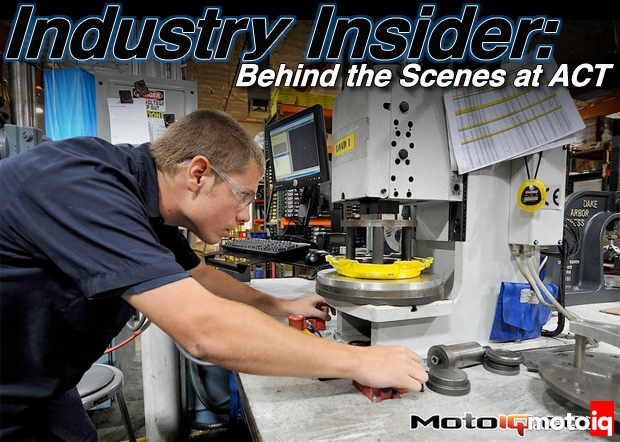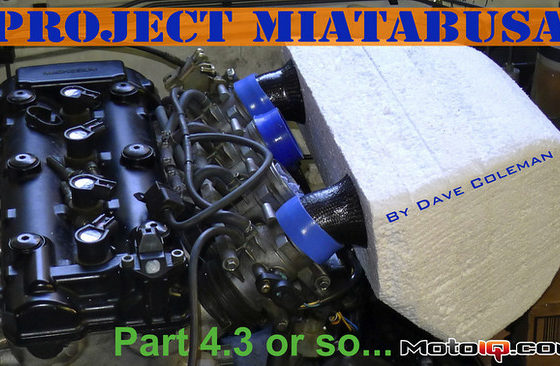,
 |
| The diaphragm spring, pivot ring and drive straps are riveted in place first, the pressure ring is riveted in last. |
Pressure plate covers are sent out to be powdercoated in trademark ACT yellow. Powdercoating is much tougher and more corrosion resistant than regular paint. After powdercoating the pressure plates are assembled in fixtures. Unlike many other heavy duty racing clutch manufacturers, ACT pays attention to many performance related details. Typically the pressure ring contains the fulcrum that the diaphragm spring works over. Most clutch companies do not touch this part and simply bend the stock spring to increase preload then re-heat treat it to increase clamp load.
 |
| The pressure ring riveted in place over the guts. |
ACT manufactures their pressure rings with a lot of surplus material in the area of the fulcrum so that they can machine it in an entirely new position with the proper leverage ratio to work with a new thicker and stiffer diaphragm spring. With the ability to manipulate the lever point of the diaphragm spring, ACT has good control of the pedal engagement height, pedal effort and release clearance. This is engineered so an ACT clutch won’t engage near the floor or at the top of the pedal stroke. The clutch will have less of a light switch engagement and will have a short enough amount of engagement travel to be easy on synchros.
 |
| The parts are placed into this rigid mandrel and the rivets fixed in this hydraulic press. |
ACT uses their own proprietary diaphragm springs in most cases. Each spring is designed for the application. ACT controls the thickness and shape for the proper clamping load and clamp load curve. The diaphragm spring can be stamped with ridges to change the clamp load properties. ACT also heat treats their own springs in house in a special temperature controlled oven to ensure proper quality control of this critical process..
 |
| The press is used to apply force to expand the rivets with the fixturing ensuring consistent assembly. |
The ACT pressure plate is held to the cover with special drive straps. ACT drive straps are much heavier and stronger with a special geometry to make the clutch release characteristics more consistent and crisper. Drive strap failure is common in high horsepower cars and ACT positively addresses this issue. The pressure plate is assembled using proprietary large headed rivets in special bespoke tooling that solidly holds the components together while they are being pressed by a huge hydraulic press.
 |
| The assembled pressure plate is inspected for correct operation with this computerized tester. Clamp load and engagement travel is confirmed automatically. The test data for each pressure plate is stored for quality assurance monitoring. |
 |
| Finally every pressure plate is dynamically balance on this machine. |



